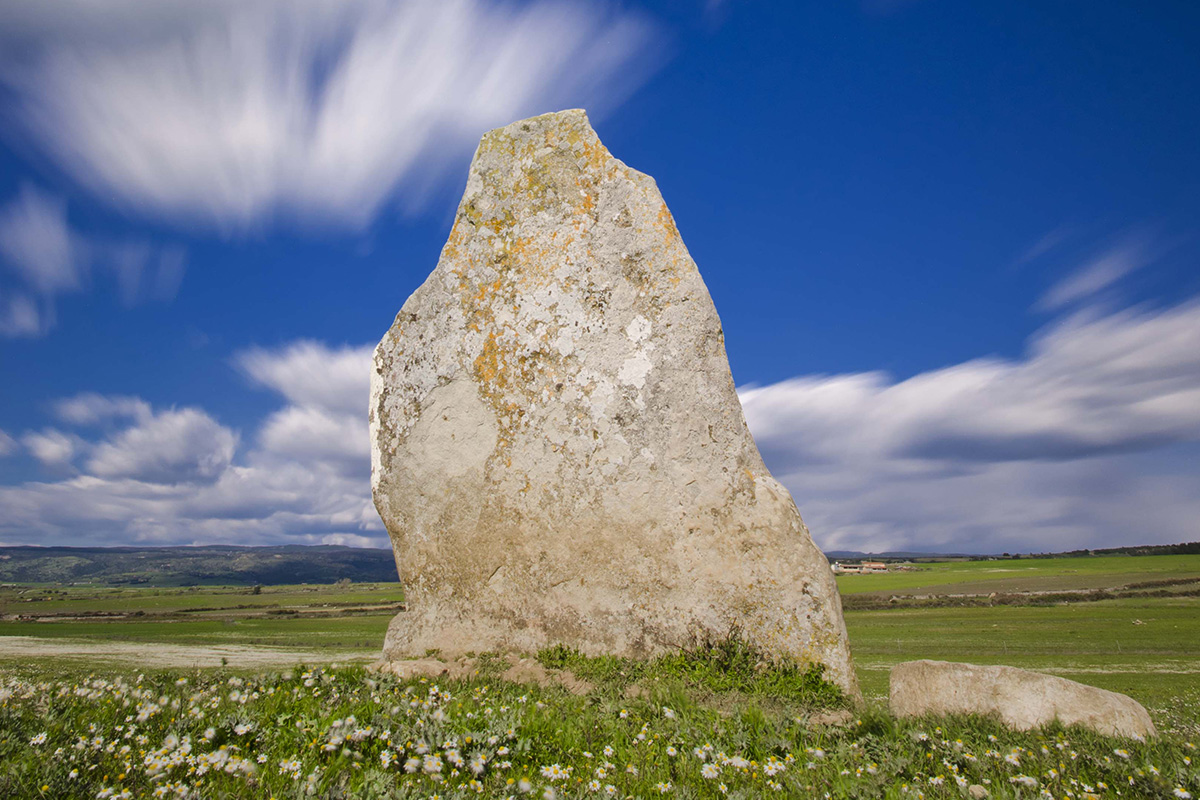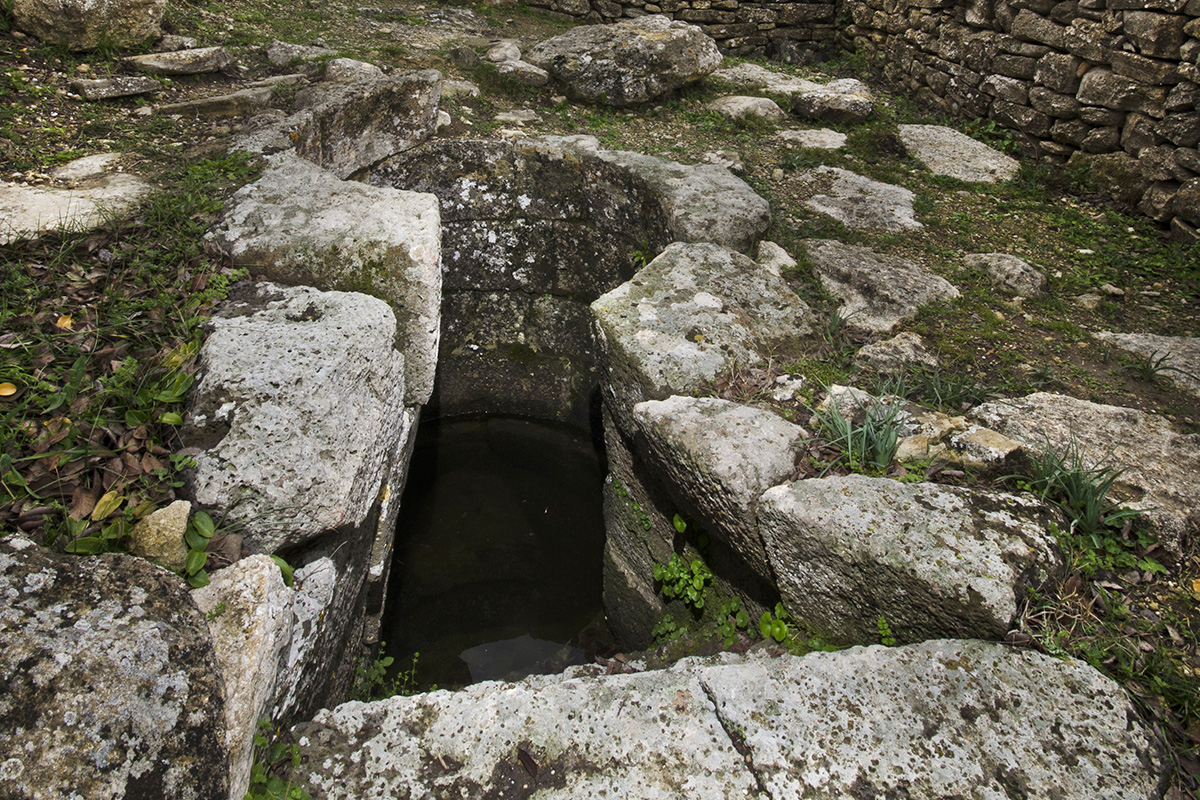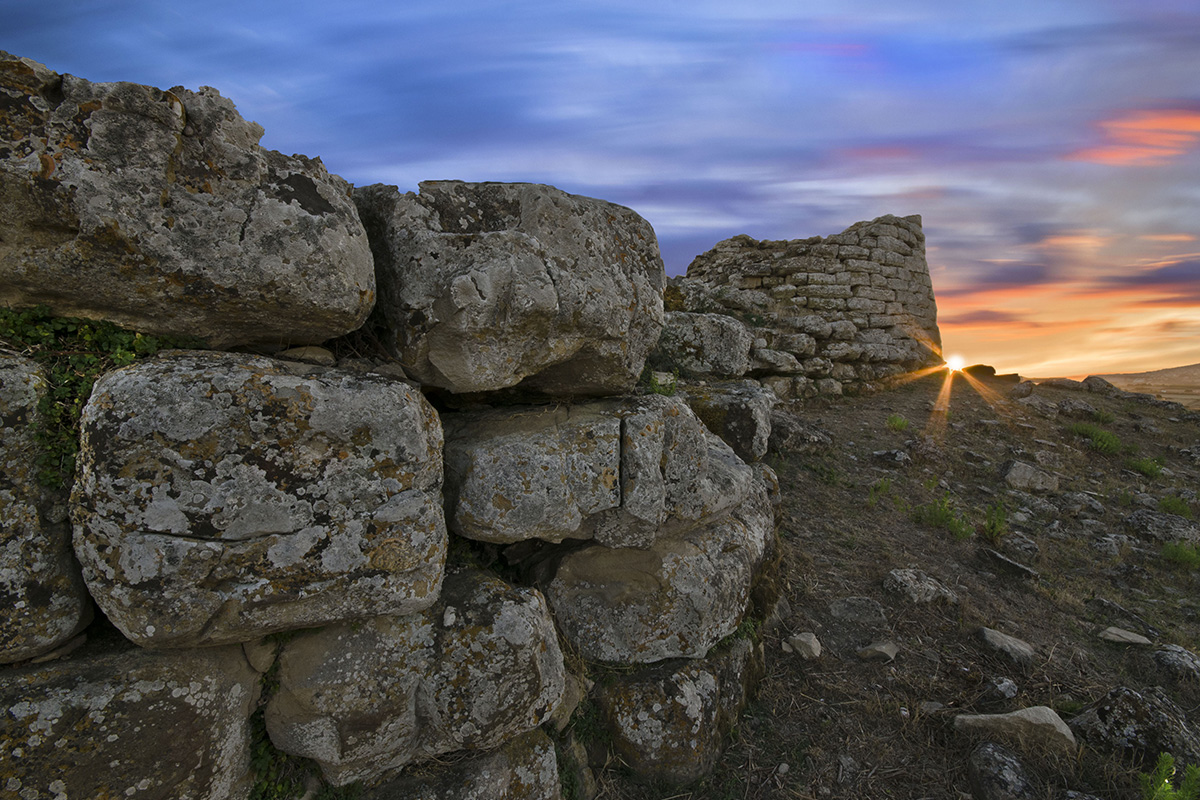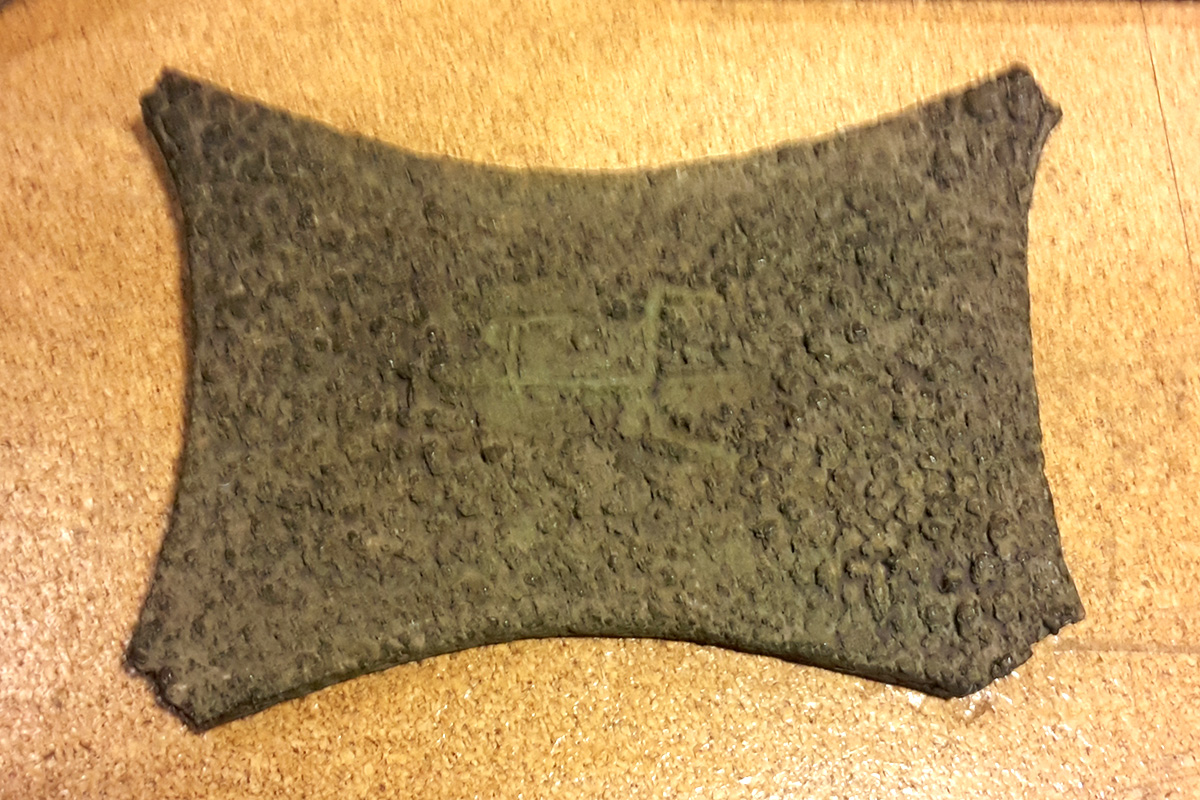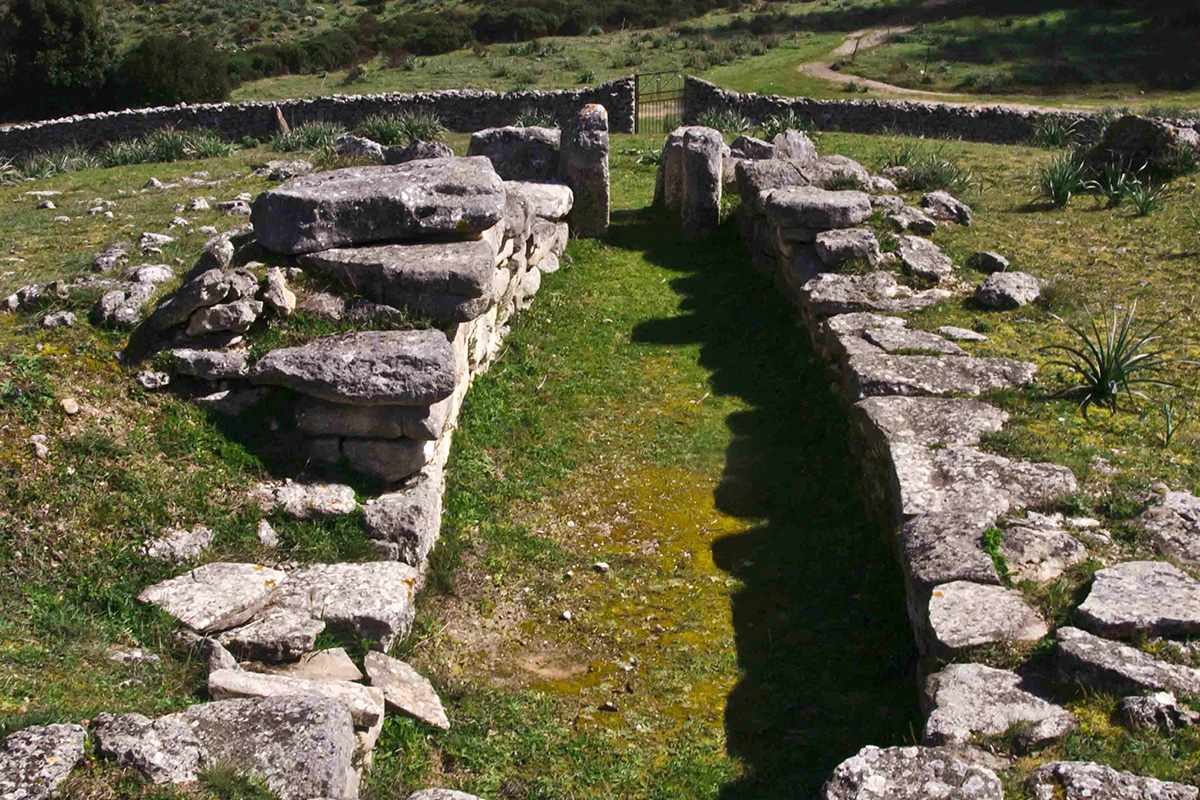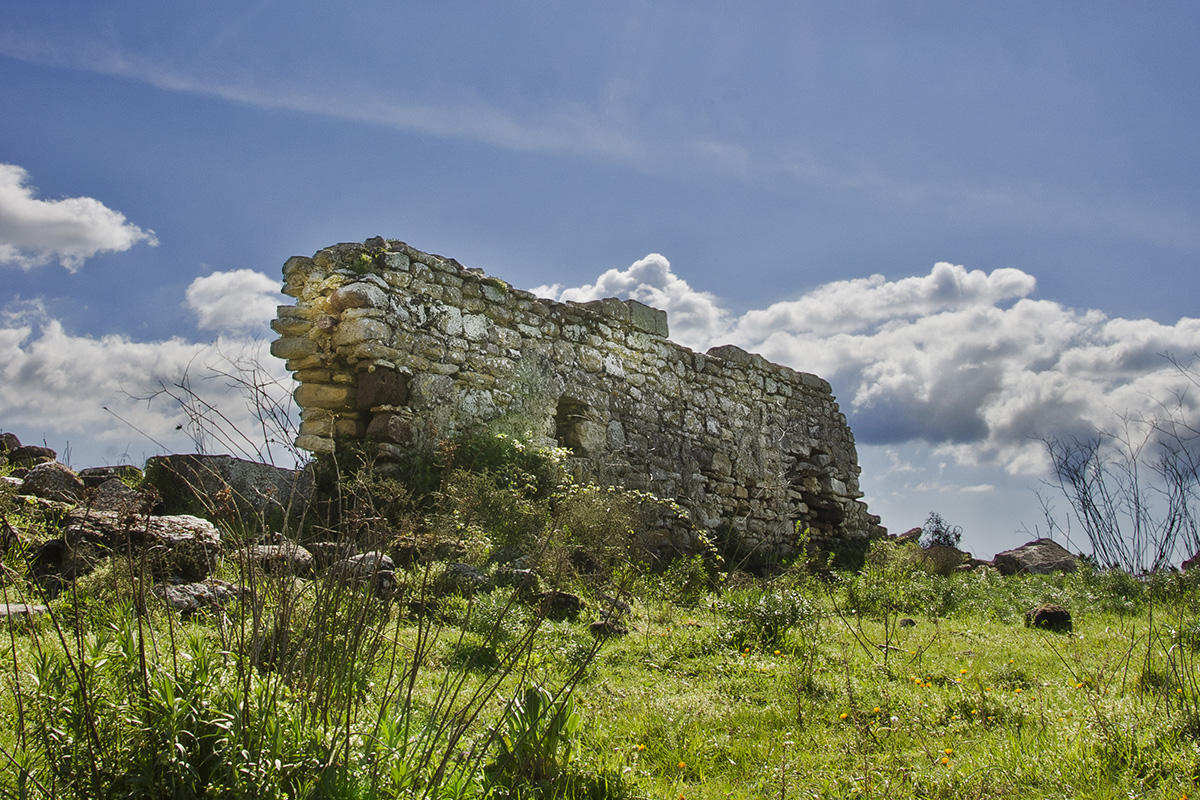The territory of Nuragus occupies part of the southern-center of the Sarcidano, closed in by the Giara of Gesturi, the mountains of Isili, the mountain of Santu Antine of Genoni and the Sarcidano plateau.
Since the Neolithic period this area has offered much of interest to the eye of the archaeologist. Testimony of an even more remote past are found in some of the Domus de Janas (like Pardilenza and Conca’e Ortu) a menhir (Sa Perda Fitta) and many monuments of the Nuraghic era, of which among these the most famous are the sacred well of Coni and the nuraghes of Santu Millanu and Valenza.

